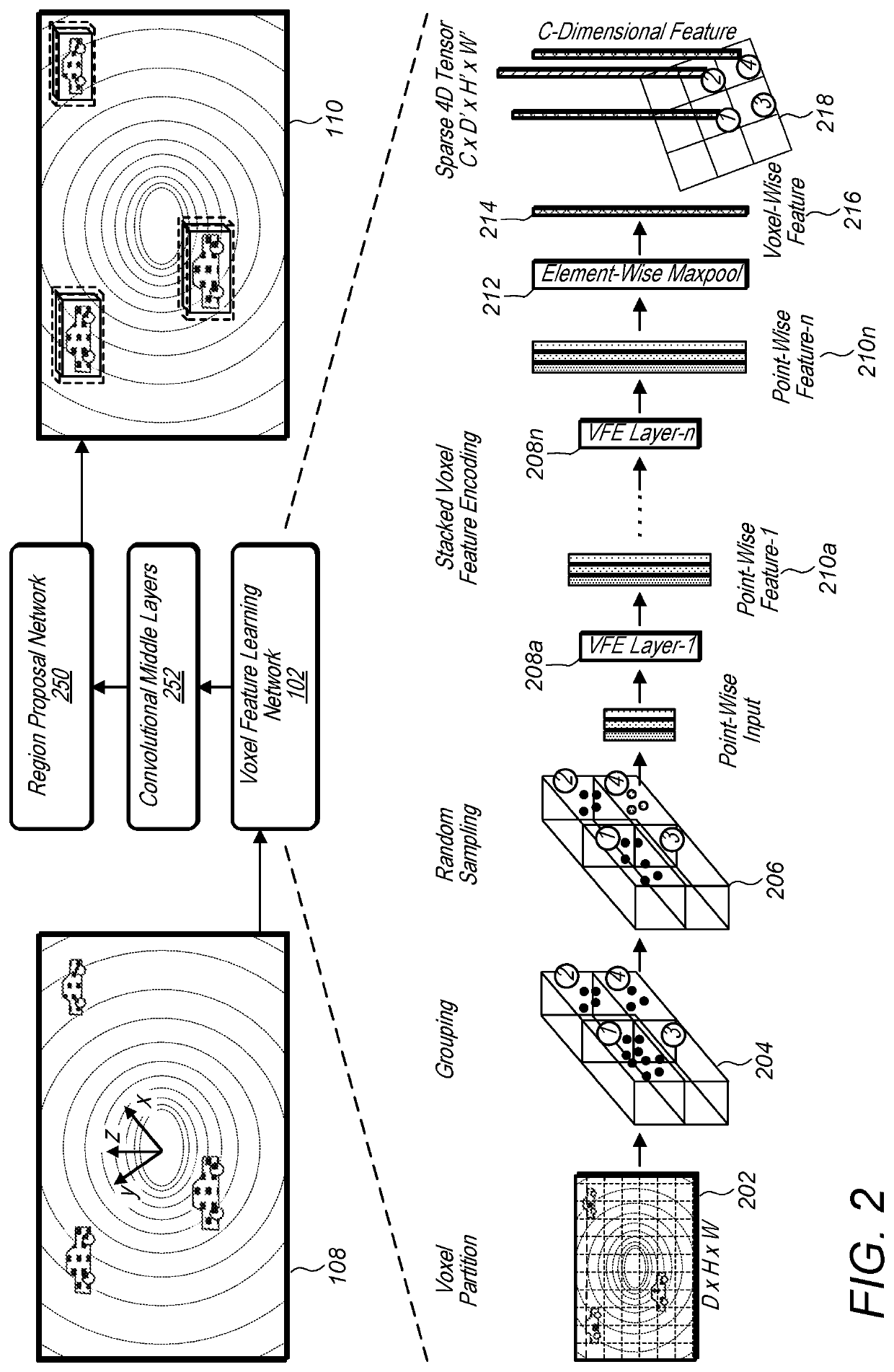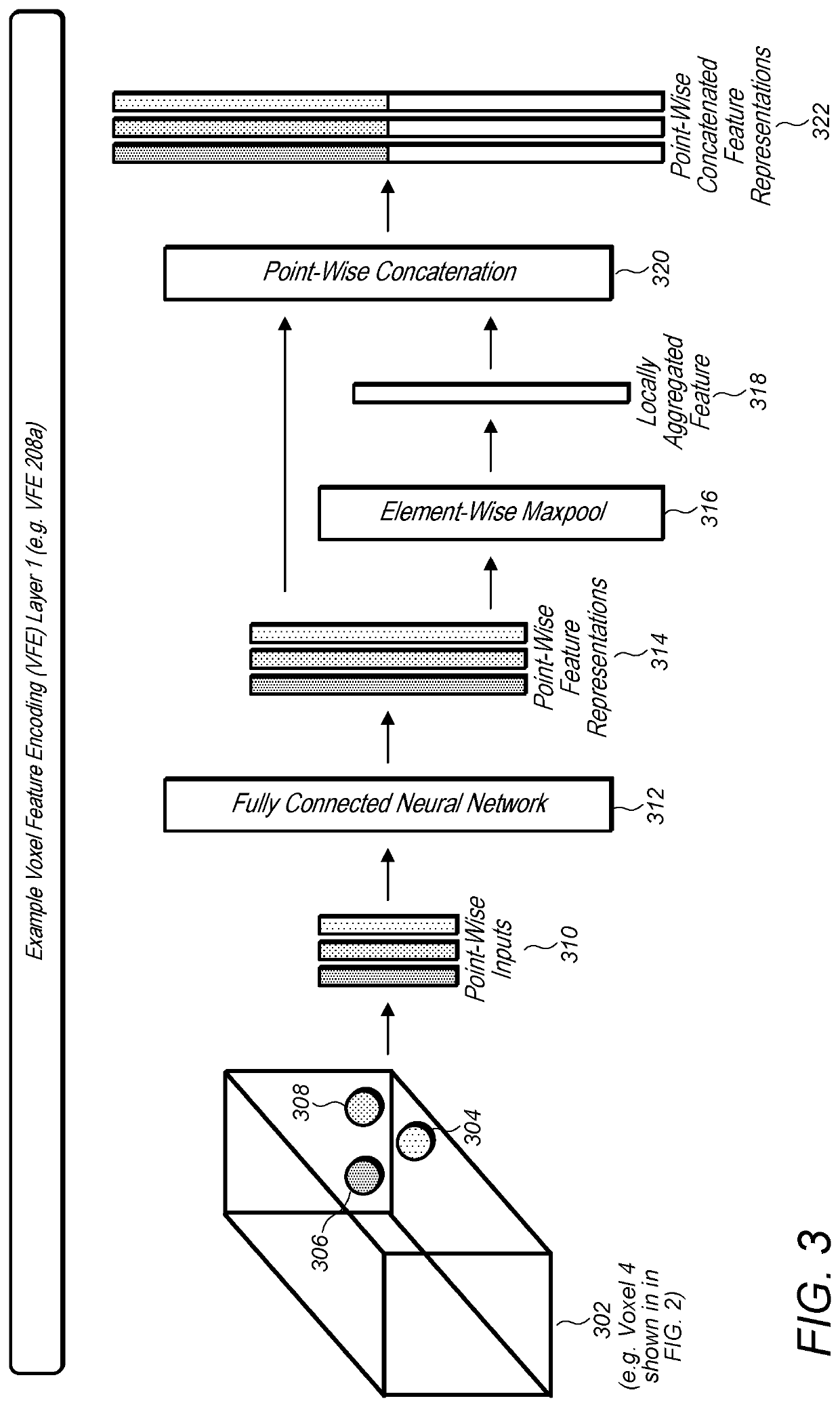Voxel-based feature learning network
a feature learning and feature network technology, applied in the field of machine learning systems and algorithms, can solve the problems of imposing exorbitant computational and memory requirements, rendering such approaches infeasible, and achieve the effect of reducing the mean orientation error, and improving the mean average object detection precision
- Summary
- Abstract
- Description
- Claims
- Application Information
AI Technical Summary
Benefits of technology
Problems solved by technology
Method used
Image
Examples
example system implementation
[0078]FIG. 8 illustrates an example system that receives a raw point cloud from a point cloud sensor and generates an object detection output using a voxel feature learning / detection network, according to some embodiments.
[0079]A system configured to implement a generic 3D detection network as described herein may include at least three functional blocks: (1) Voxel Feature Learning Network, (2) Convolution Middle Layers, and (3) Region Proposal Network, as illustrated in FIG. 8. For example, system 800 includes voxel feature learning network 810, convolutional middle layers 812, and region proposal network 814. System 800 may implemented using one or more computers 1200 as illustrated in FIG. 12. As illustrated in FIG. 8, the voxel feature learning network 810 may first take a raw point cloud 808 as input from a sensor 802, such as a LiDar sensor. The voxel feature learning network 810 may transform the raw point cloud into a more compact sparse 4D tensor. In addition, the convoluti...
example training
[0085]FIG. 10 illustrates an example of training data for vehicle detection that may be used to train a voxel feature learning / detection network, according to some embodiments. For example training data may include ground truth object regions 1002 that may be compared to detected 3D object regions.
[0086]FIG. 11 illustrates example types of objects that may be identified by an object detection system that includes a voxel feature learning / detection network, according to some embodiments. In addition to vehicle (1102) training data, a voxel feature learning / detection network may be trained to identify other types of objects such as pedestrians 1104, cyclists 1106, etc.
[0087]One experimental setup according to one example embodiment may be based on the LiDAR specifications of the KITTI dataset.
[0088]Car Detection: For this task, point clouds within the range of [−3; 1]×[−40; 40]×[0; 70.4] meters along Z, Y, X axis respectively may be considered. Points that are projected outside of ima...
PUM
 Login to View More
Login to View More Abstract
Description
Claims
Application Information
 Login to View More
Login to View More - R&D
- Intellectual Property
- Life Sciences
- Materials
- Tech Scout
- Unparalleled Data Quality
- Higher Quality Content
- 60% Fewer Hallucinations
Browse by: Latest US Patents, China's latest patents, Technical Efficacy Thesaurus, Application Domain, Technology Topic, Popular Technical Reports.
© 2025 PatSnap. All rights reserved.Legal|Privacy policy|Modern Slavery Act Transparency Statement|Sitemap|About US| Contact US: help@patsnap.com



